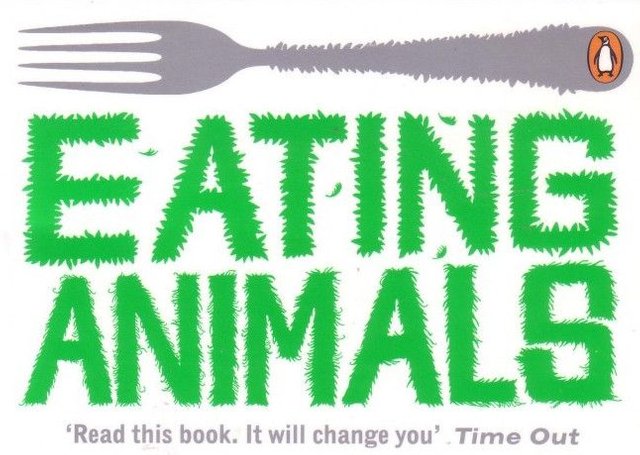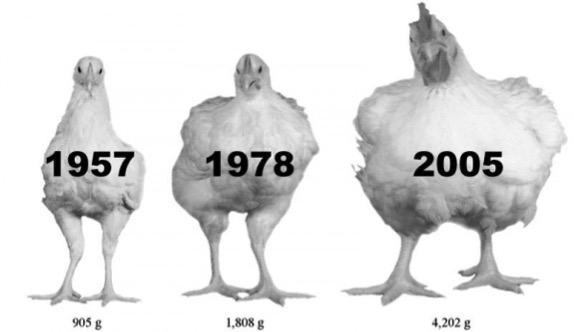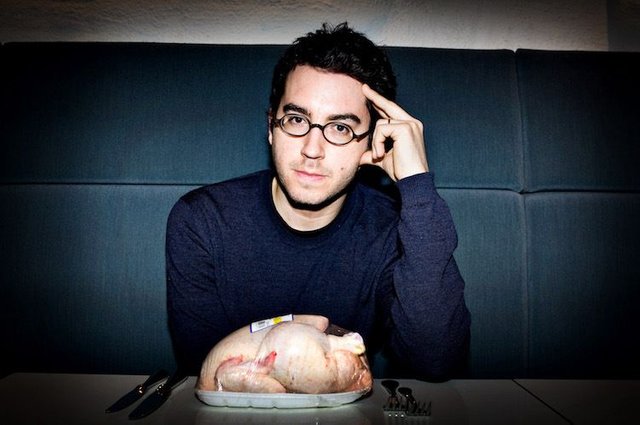
There are countless reasons one may decide to go plant based or lower their consumption of animal foods and those reasons fall into 4 main categories - Personal Health, Environmental Impacts, Ethical Motives & Spirituality. In Foer’s expansive and wonderfully written book “Eating Animals” he narrows in on the environmental and ethical aspects of consuming animal based foods and the factory farming system that produces 99% percent of them. “Eating Animals” is his first nonfiction book, succeeded by “Everything Is Illuminated” and “Extremely Loud & Incredibly Close” both of which are now major motion pictures and have been translated into 36 different languages. I read “Everything Is Illuminated” about 10 years ago and his name and style have always stuck with me. His illustrative words can paint the culture of a scene in a manner that provides a fluid read and while conveying the deeply personal connections to the story. I was looking for books of authors I’ve enjoyed in the past after a resurgence in my passion for reading, spurred by my love for learning and newfound clarity resulting from letting go of my daily intake of drugs, predominantly alcohol. Now I can read and remember the text well instead of glazing over the pages. So when I came across this book I was elated that a writer I already admired was taking on a topic I care so much about.
Much like Nicolette Niman, a vegetarian rancher and subject of an extensive interview in Foer’s book, I got to a point where I believed because I had stopped eating animal products I didn’t need to take in anymore information about animal agriculture. I knew what side of the fence I was on. I’d crossed the threshold and knew I wasn’t going backwards, so why continue to look into this dismal tenant of our food system? As people around me began to make shifts, I realized that the more information I take in, the more I can help them on their path. My solitary decision to stop eating animals has immense benefits for my personal health and spirituality but my tiny impact on the food industry and planet at large is multiplied every time someone else gets on board and by keeping up with the realities of what’s happening around us, I could aid others and we could collectively make a stronger impact on the environment both in the grand sense and locally. Animal agriculture is a heinous system to look into and I applaud Jonathan for doing so in such a thorough and unflinching way. Whether you eat animals or not, it’s horrific, there’s now way around it. As Foer tells in his book, even the farms with the least amount of cruelty still do things we’d never conceive of doing to an animal ourselves like hot iron branding, removing body parts without anesthetic and leaving animals without food or water for the duration of their travel from the farm to the slaughterhouse.

Don’t be fooled by the title though, “Eating Animals” isn’t strictly about going vegan. Foer examines both sides of the coin and everything in between including conscious ominvourism, something I dabbled with for a few weeks, optimistically thinking I’d found a way to keep meat in my life without the guilt until I quickly learned that was an impossibility for me. In the animal food industry terms like “cage-free” or “free-range” may provide a feeling of comfort but that’s absolutely not what the animals are feeling at any point in their dismal, shortened and genetically engineered lives. The only word that really signifies a better end product is organic, which stipulates that the animal was raised on organic feed, the animal can be traced throughout it’s lifecycle, no antibiotics or growth hormones may be used and they have access to the outdoors. While this does mean nutritionally the animals are less damaging to us than the alternative, it doesn’t mean their life had any less cruelty than a non-organically raised animals did. Yes, that last stipulation, “access to the outdoors” sounds great but that’s often as minimal as having 1 window with a screen on it it let in some air and sunlight through a massive warehouse of overpacked animals.
One of the focal points of the book is that 99% of animal foods today come from factory farms. Yes, a farm may have a family’s name on it, giving it a more wholesome connotation but the processing of the animals is the same. Even calling these places farms is generous. The people overseeing them are farmers in the way that when I buy a succulent for inside my home I am a gardener. Generation after generation animals are engineered to grow, live and taste a certain way and to insure their investments, animal agriculture removes as many variables as possible. “Farmers” oversee animals growth and diseases is systematically countered making them more like nightmarish babysitters monitoring science experiments.

That’s not to say that the jobs of people working factory farms is an easy one, quite the opposite is true. The reason animal products are eaten in such a great capacity is because the gruesome side is out of sight and out of mind for the consumer. Paying someone else to carry out the life long torture and cruel demise let’s people focus on the end result rather than the what it took to get that product from point A to B. By turning animals into a commodity rather than observing meat as flesh that’s remarkably similar to what our own animal bodies are comprised of allows blissful ignorance to prevail so the business can continue to boom. That burden the consumer gets to bypass is shifted onto the workers of these factories. Whether you’re vegan or not, it’s hard to imagine a job worse than killing thousands of animals daily with estimates exceeding over 2,000 cattle per shift. This is why animal agriculture has a turnover rate of 100% - 150% annually. Most of these workers do it because it’s the only option for them. The industry has the highest workplace injury rate of any job, 27% annually, and over time the physical and mental effects on the workers is undeniable. One worker who wished to remain anonymous had this to say,
“The worst thing, worse than the physical danger, is the emotional toll. If you work in the stick pit for any period of time, you develop an attitude that let’s you kill things but doesn’t let you care. You may look a hog in it’s eye that’s walking around down in the blood pit with you and think, God, that really isn’t a bad-looking animal. You may want to pet it. Pigs down on the kill floor have come up and nuzzled me like a puppy. Two minutes later I had to kill them, beat them to death with a pipe..”
While the book has a narrative running through it, it’s laden with facts and testimonials about animal agriculture, one of the most gut-wrenching is that American farmers are 4 times more likely to commit suicide than the general public. While agriculture may only provide work for 2% of people, down from 20% in 1930 due to automation, the high suicide rate remains appalling and the widespread mental health issues shouldn't be ignored. Funneling that much anguish onto another person because the average consumer is incapable of doing what they do exemplifies that as a nation our appetites are put ahead of the well being of animals and fellow humans beings alike.
Foer examines both ends of the spectrum from the worst factory farms (Looking at you Smithfield) to the ones who are doing there best to minimize cruelty and uphold traditions like the Niman’s Ranch. So it’s not all doom and gloom. It’s objective reporting and there are even times I feel he’s taking it easy on the farmers. He’s condemning factory farming more than meat consumption, something anyone, herbivore or carnivore should be able to get behind.
The conditions of factory farming allow disease to flourish and have routinely transferred harmful pathogens over to the consumer. It’s not hard to imagine when chickens are typically housed in wire battery cages with an equal square footage to that of a sheet of printer paper or less, then stacked high in levels, Japan will go up to 18 levels high, America hovers around 9. Anyone with an understanding of gravity should be able to decipher why stacking levels of chickens in wire cages is a vile practice. While it’s easy to pick up a carton of eggs at the store and not think twice about their source or the system their purchase supports it raises the question, is ignorance bliss?
It hasn’t always been this way. It’s just the industry responding to demand and doing what any business does. Foer didn’t write this book to spread fear and in turn, I’m not writing this just review to highlight the shocking or unforgettable parts of his book. It’s simply about connecting people to what’s really happening. Unless you’re actively seeking out meat produced in more conscious ways, then the meat you buy, whether it’s from a store or a restaurant, is from a factory farm. When I went plant based it was for a myriad of reason including the desire to bring more nourishing foods into my life while pulling my support from foods and industries I no longer agreed with. Although I am a strong willed person, my initial notions wouldn’t be enough to insure I make the right choices. Information was vital for making the shifts that felt right to me. I used to love chicken wings and thought I would crave them for the rest of my life but after saturating myself with information I couldn’t bring myself to eat them and now am baffled it even took me so long to make the change. I created this platform to share the things that make transitioning easier and it’s books like this that cut through the pretension and get right to the core of the matter. How much suffering are we ok with? In our sense of right and wrong, where does animal cruelty fall? Does our view of what constitutes animal cruelty vary from one species to another?
Whether you’re looking to go full vegan or simply want to eat less meat, examining the process that 99% of animals go through is something everyone should understand. Foer covers so many topics, from the brief and recent evolution of factory farming to how tolerant corporations like KFC and Tyson are of excessive cruelty. Even if someone eats meat daily, I believe they wouldn’t want animals to be subjected to over the top and sadistic abuse.
Animal agriculture is doing more harm to our planet than we may be able to reverse and every day that people support it we move the planet in the wrong direction. What do people of less fortunate countries think when we use so much food and water to fatten up livestock because we want to eat more meat than any other country? For every calorie an animal produces it takes in up 6 to 26 of food that could have gone directly to people. Our misuse of food, water and land is undeniable and it’s not just long haired hippie vegans saying so, Foer notes that the UN special envoy on food called it a “crime against humanity” to funnel 100 million tons of grain and corn to ethanol while almost a billion people are starving. That sounds terrible, and it is, but it doesn’t hold a candle to animal agriculture “which uses 756 million tons of grain and corn per year, much more than enough to adequately feed the 1.4 billion humans who are living in dire poverty” Using 98% of the 225 million ton global soy crop for livestock feed is a slap in the face to starving communities across the globe and as a group we need to think about whether this is the Earth we want to cultivate.
Foer had been a vegetarian on and off for years but when his first child was on the way he decided to examine what kind of world he wanted to provide for his son. If he believed certain practices we inherently wrong, he knew they needed to be addressed so he would not be passing them on to the next generation and I think that speaks to where we’re at as a species. The times of eating meat because it’s all we can access have long since passed in America. All winter long groceries stores are packed with options, it’s up to us to decided how we want to continue with things.

Whether it’s a book, a documentary or a blog, it’s information that helped to cement my decision to follow a plant based lifestyle and though parts of this book aren’t easy to read, I believe it’s a powerful tool for anyone looking to move away from animal foods. The real life testimonials throughout the book put the system into a personal context which helps to eliminate the disconnect that animal agriculture actively works to maintain. Public health officials can clearly state the need to reduce our reliance on animals as our main food source but their voice is outweighed by that of animal agriculture and pharmaceutical industries because we give them more power. When you begin to pull your monetary support from industries you don’t agree with, you start a snowball effect that can result in real change.
The environmental impacts of a plant based diet can feel like a drop in the ocean at times but as a group we have a collective power. By making informed decisions we can sculpt the world we want to live in and foster for the generations to come. Changes may not happen quickly but by directing our efforts to the solution rather than the problem we can topple the forces working against our planet. Jonathan Safron Foer has given humanity a powerful tool to fight against these negative forces as well as wonderfully articulated, poignant and thoughtful book that was a joy to read. Sure, at times it’s grizzly but the story of animal agriculture couldn’t be honestly told without such details. Throughout the process of going from a standard diet to a plant based one there are challenges and facing them is how you overcome them. With this book, you will have a deeper understanding of the environmental and ethical aspects of shifting to a plant based diet. I can’t recommend it highly enough, regardless of where you’re at on the spectrum. Foer is an exceptionally talented writer and I’m so grateful he spent so much time investigating, researching and producing such a fantastic book. The world is a better place because of it.



